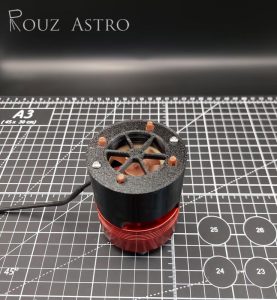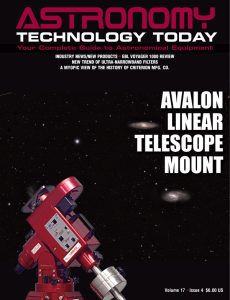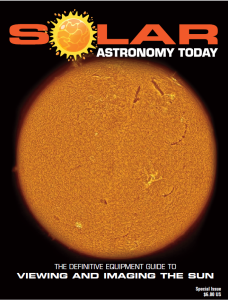The Rouz Astro Active Cooling Kit is designed to cool ZWO ASI uncooled cameras with a 1x central bolt hole on the back of the camera.
 A large aluminum heat sink and a high efficiency fan dissipates heat that lowers the thermal noise in the images, thus improving sensitivity and quality. It is designed as a forced air-cooling system as opposed to a Peltier cooler that can cause dew. It is easy to install, lightweight, silent, and uses very little power at only 0.6 watts.
A large aluminum heat sink and a high efficiency fan dissipates heat that lowers the thermal noise in the images, thus improving sensitivity and quality. It is designed as a forced air-cooling system as opposed to a Peltier cooler that can cause dew. It is easy to install, lightweight, silent, and uses very little power at only 0.6 watts.
According to the Rouz Astro team, “Tests of the Active Cooling Kit show over a 10 degrees Celsius drop in sensor temperature. The cooler the ambient air, the more efficient the kit becomes. One concern when using fans for cooling is that the vibration caused by the rotating parts may blur the image, this is solved here by mechanically isolating the fan with 4x silicon vibration suppression mounts. No part of the fan physically touches the cooler body and there is a small air gap between the fan and intake duct of the cooler.”
The Rouz Astro Active Cooling Kit standard version for nighttime use is black. The solar version is silver in color to reflect more heat, keeping it cooler. The material for the construction of both versions is PETG, which offers strength, durability and is heat resistant up to 70 degrees Celsius. Thermal coupling paste is provided along with all the necessary stainless-steel hardware and installation takes just a few minutes.
You can learn more about the Rouz Astro Active Cooling Kit here.

 And to make it easier for you to get the most extensive news, articles and reviews that are only available in the magazine pages of Astronomy Technology Today, we are offering a 1-year magazine subscription for only $6! Or, for an even better deal, we are offering 2 years for only $9. Click here to get these deals which only will be available for a very limited time. You can also check out a free sample issue here.
And to make it easier for you to get the most extensive news, articles and reviews that are only available in the magazine pages of Astronomy Technology Today, we are offering a 1-year magazine subscription for only $6! Or, for an even better deal, we are offering 2 years for only $9. Click here to get these deals which only will be available for a very limited time. You can also check out a free sample issue here.
The Sun is more active than it’s been in years and if that’s not enough, we have the Annular Solar Eclipse on October 14, 2023 and the Total Solar Eclipse on April 8, 2024! If you’d like to learn more about the technology behind solar observing, solar imaging and more, you can check out our free publication, “The Definitive Guide to Viewing and Imaging the Sun”. You don’t have to sign up or provide any information, simply click here and enjoy reading!



